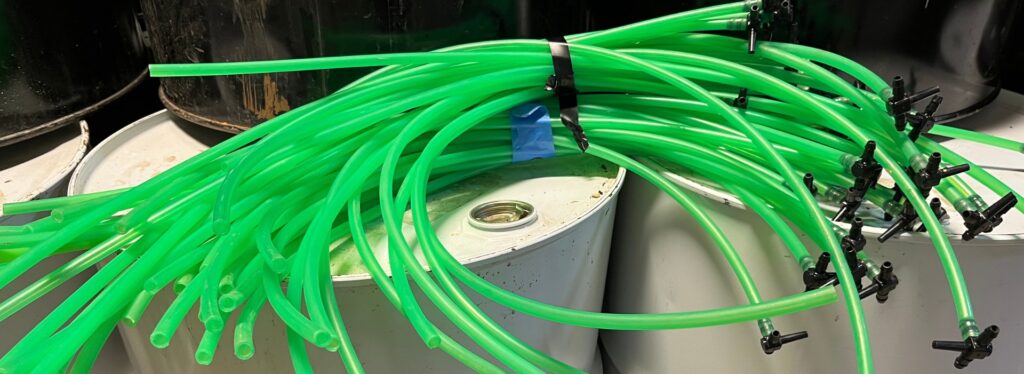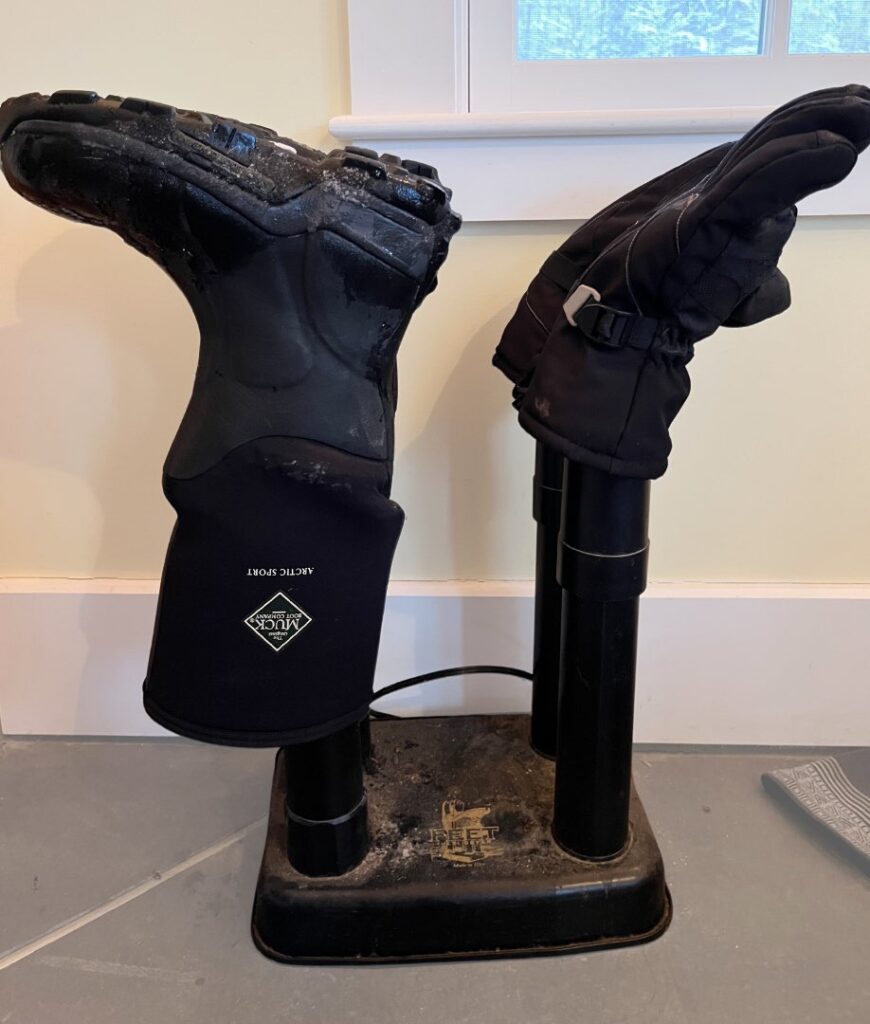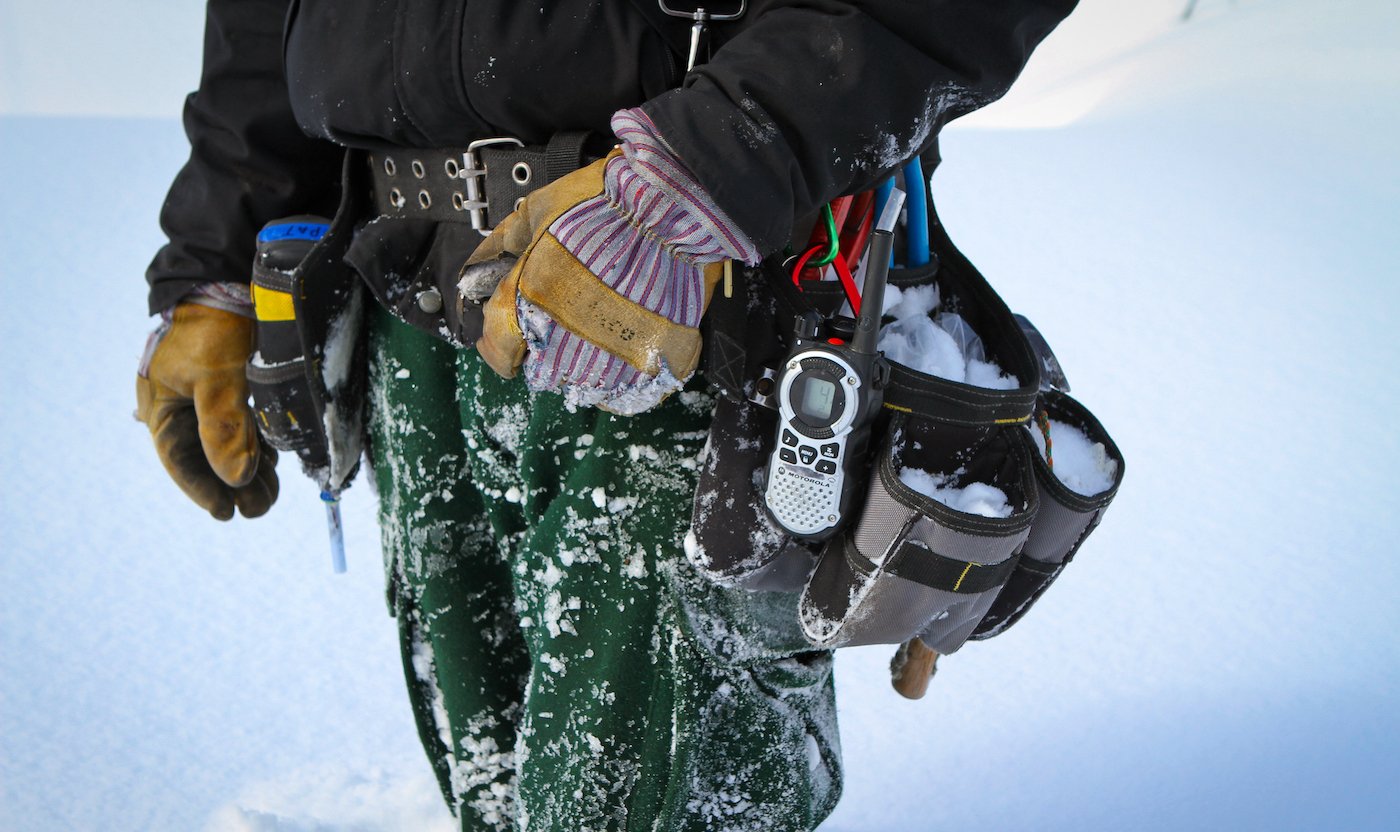We have talked about how to tap a tree a few times here on our blog. This time around we thought we would get a little more granular and highlight some of the tools we use as a means of explaining what we do. Some are basic and others peculiar, but they all tell the story of working in the woods. We promise not to get too technical.
Drill, Spout, Hammer

We start with the basics. You drill a hole in a maple tree that is 8” in diameter or larger (the tree, not the hole), tap in a spout using the hammer, and then attach the end of the spout to the tubing system. If conditions are accommodating, you can tap up to 500 trees in one day. If the snow is waist-deep and the trees are far apart, it could be more like 100. Either way, this is the main activity of the day when actively tapping.
“One Hand” + “Two Hands”

These strange-looking things are for repairs. We have over 600 miles of tubing in the woods and between nibbly squirrels and falling branches, it takes a beating. Since people are often spread out in the woods you need tools that allow you to make repairs by yourself. If you are trying to pull two tightly stretched ends of tubing together you are going to need more hands to actually do the connecting in the middle. The white pvc thingies on a string, called a “one hand” or sometimes a “third hand,” are used to clamp onto two ends of tubing, holding them in place, while the red thingy, a tubing tool or “two hands,” fits on connectors in the middle. They might look like something you find at the dentist but they are very helpful.
Walkie Talkie

Everyone in the woods carries a radio, aka walkie talkie. Above all, they are for safety. The sugarbush in Cambridge spans 1200 acres and teams are often spread out into several areas. If anyone got injured, the radio would be critical in finding them. Generally, they are used for less dire needs like what areas have been covered or when is lunch.
Pencil

A writing utensil and small pad are in most people’s packs because you often run across issues that need attention, but you may have to write the details and come back to it. Why is it red? So you can find it in the snow if you drop it. Why a pencil and not a pen? Ink freezes in a Vermont winter.
Drops

These are known as drop lines, or “drops.” They are the last bit of line inserted into the tubing to connect to the spout in the tree. Given there is one for each spout and we have roughly 68,000 spouts here in Cambridge alone, it is fair to say we’ve made a lot of these.
Couplers, Clamps, Connectors

With over 600 miles of tubing, from large, heavy conductors to small drops, there are myriad ways of hooking it all up. Clamps, couplers, connectors – we’ve got ‘em all.
Tap Puller

This gizmo is a tap puller. All the taps are removed from the trees at the end of the season. Why is it so long, you may ask? Often when we put the taps in, there are several feet of snow underfoot, which might result in a tap being high up the trunk. When we pull taps at the end of the season, said snow is likely gone and you need the extra length to reach it.
Boot + Glove Dryer

The boot and glove dryer: arguably the most appreciated tool in the kit.

